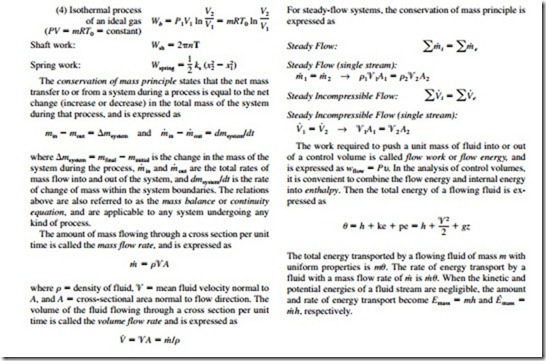SUMMARY
Energy can cross the boundaries of a closed system in the form of heat or work. For control volumes, energy can also be trans- ported by mass. If the energy transfer is due to a temperature difference between a closed system and its surroundings, it is
Work is the energy transferred as a force acts on a system through a distance. The most common form of mechanical work is the boundary work, which is the work associated with the expansion and compression of substances. On a P-V diagram, the area under the process curve represents the boundary work for a quasi-equilibrium process. Various forms of work are expressed as follows:
Related posts:
Financial justification:Capital cost savings
Pumps:Positive displacement pumps
Energy and Efficiency:Overall advantages of compressed air
High pressure:Lock hoppers and Screw feeders
Conveying capability:System capability
ROUBLESHOOTING PNEUMA TIC CIRCUITS:Rotary Screw Compressors
VALVES:fLOW CONTROL VALVES
CONTROL VALVES:Pilot-Controlled Pressure-Reducing Valves
Applications of hydraulic systems:Components of hydraulic systems.
Hydraulic fluids:Characteristics of hydraulic fluids
Hydraulic cylinders:Cylinder mountings.
Air Compressors, Air Treatment and Pressure Regulation:screw compressors
PROPERTIES OF PURE SUBSTANCES:INTERNAL ENERGY, ENTHALPY, AND SPECIFIC HEATS OF SOLIDS AND LIQUIDS
ENERGY TRANSFER BY HEAT,WORK,AND MASS:MECHANICAL FORMS OF WORK
INTRODUCTION TO FLUID MECHANICS:SURFACE TENSION AND CAPILLARY EFFECT
